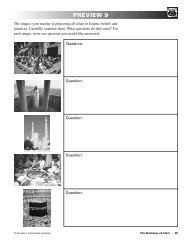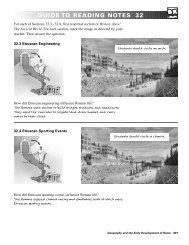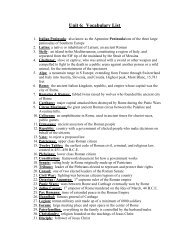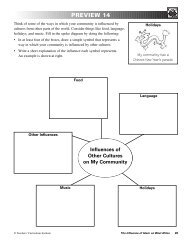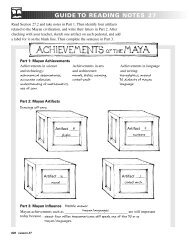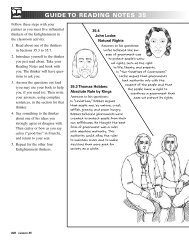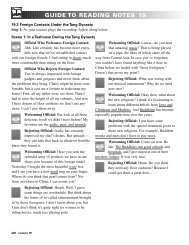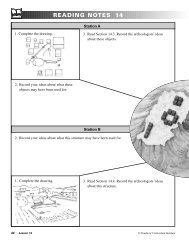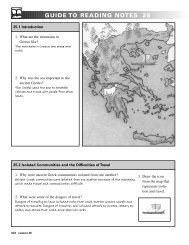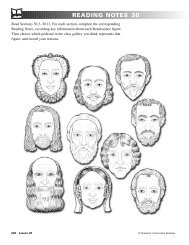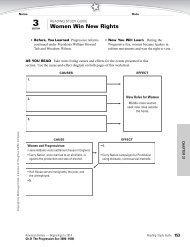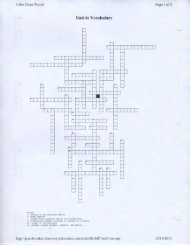GUIDE TO READING NOTES 29
GUIDE TO READING NOTES 29
GUIDE TO READING NOTES 29
You also want an ePaper? Increase the reach of your titles
YUMPU automatically turns print PDFs into web optimized ePapers that Google loves.
<strong>GUIDE</strong> <strong>TO</strong> <strong>READING</strong> <strong>NOTES</strong> <strong>29</strong><br />
<strong>29</strong>.6 Advances in Literature: Casa di Dante<br />
1. Briefly describe two ways in which Renaissance literature differed from medieval literature.<br />
Medieval literature was usually about religious subjects and was written in Latin and in an<br />
impersonal style. Renaissance literature included works about nonreligious subjects and was<br />
written in local dialects and in a more personal style.<br />
2. How is Dante’s The Divine Comedy an example of humanist art?<br />
Dante’s work expressed strong emotions, was about the experience of individuals, and commented<br />
on society and people of the time.<br />
3. Write the place from Dante’s imaginary journey—Paradiso, Purgatorio, or Inferno—that each<br />
image depicts.<br />
Purgatorio Paradiso Inferno<br />
4. Read the following passage from Dante’s The Divine Comedy. Then complete the sentence.<br />
Italian<br />
Quivi sospiri, pianti e alti guai<br />
risonavan per l’aere sanza stelle<br />
per ch’io al cominciar ne lagrimai.<br />
English<br />
Here sighs and lamentations and loud cries<br />
were echoing across the starless air<br />
so that as soon as I set out, I wept.<br />
I think this passage describes ________________________ Inferno<br />
because…<br />
(Paradiso, Purgatorio, Inferno)<br />
it’s dark and there are sighs and cries and sadness.<br />
Florence: The Cradle of the Renaissance 691




